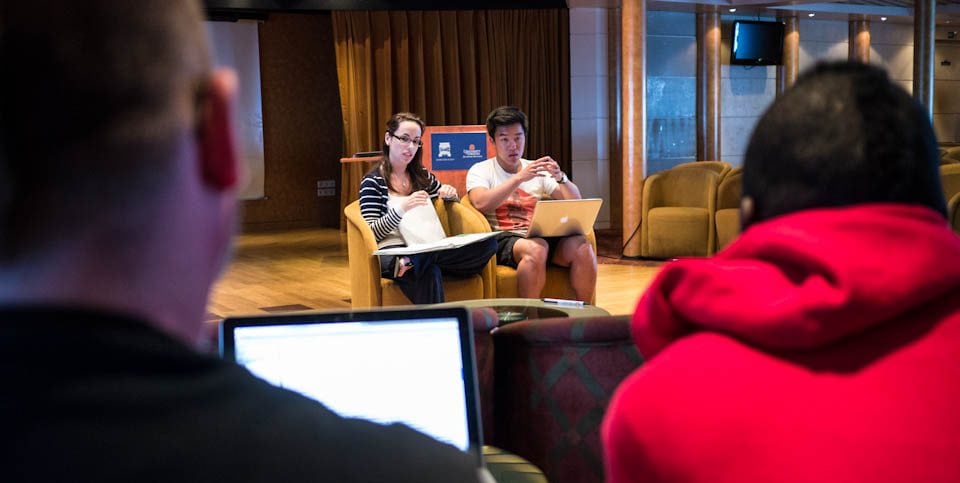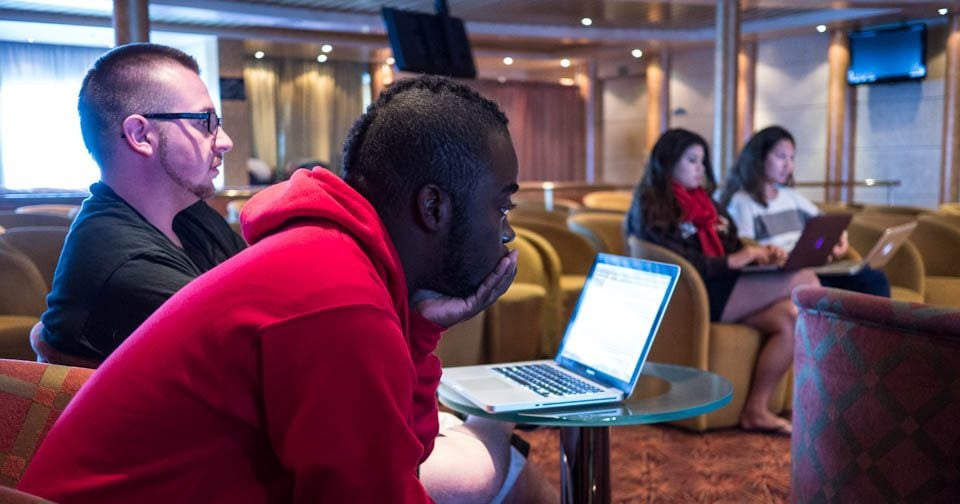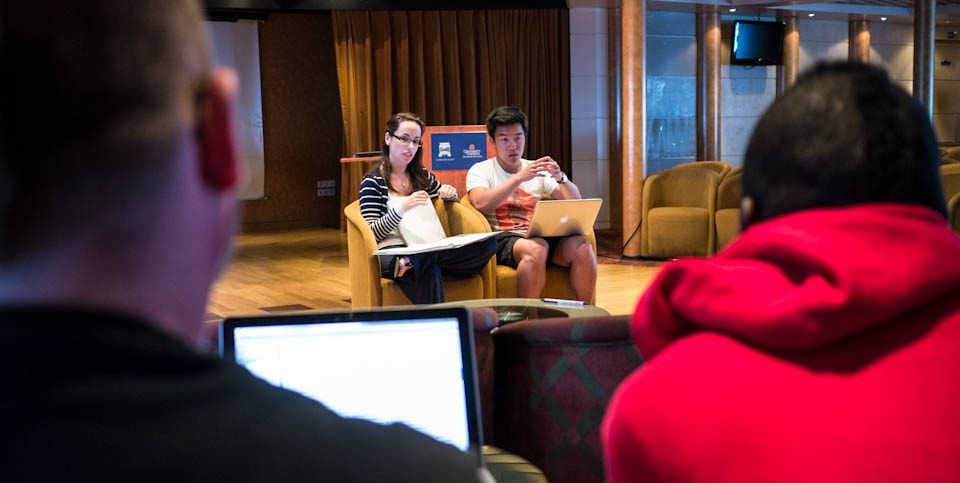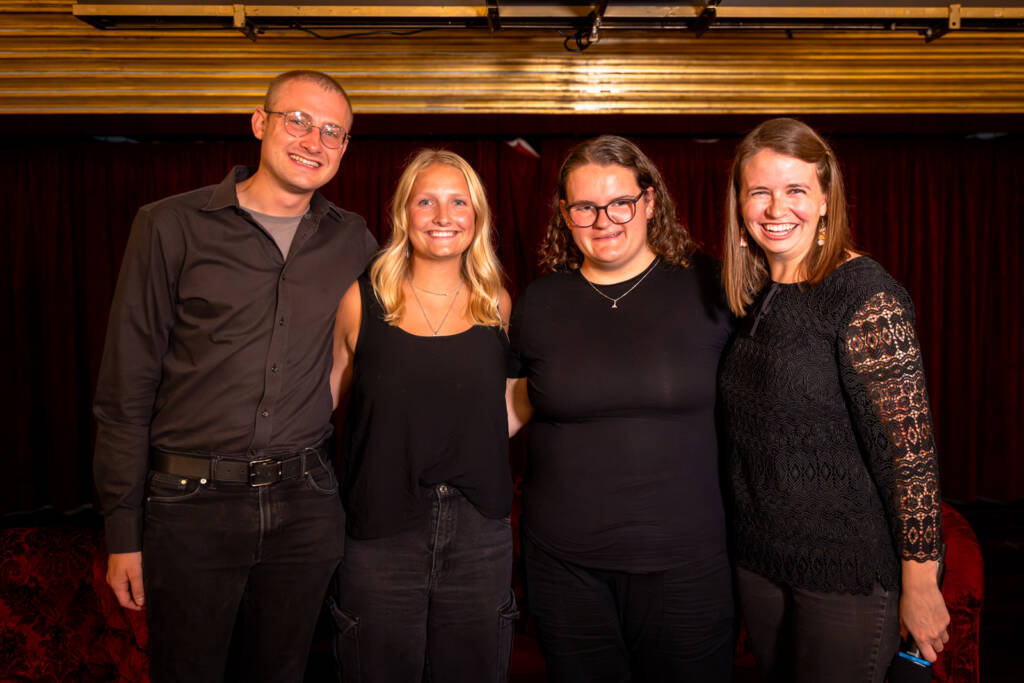
June 8, 2012. With the simple act of getting on a bus, two classes worth of students, two professors and one reporter began an odyssey to see first-hand one of the most important places involved with upholding human rights in the world, the Inter-American Court of Human Rights. It was a trek that would take them halfway across Costa Rica and back–in less than one full day.
Human rights are something we're all entitled to as human beings. They're basic and inherent to existing in this world. Or they should be. As we all know, the world isn't a perfect place and rights aren't always upheld despite their enormous importance. On the Short Term 2012 Semester at Sea voyage, there are not only one, but two classes dedicated to studying human rights and the ways they are upheld.
Ethics and Human Rights in World Politics is taught by John Cerone. Cerone is both the Director of the Center for International Law and Policy and a Professor of Law at the New England School of Law in Boston, Massachusetts. His class has been learning about the ways human rights are protected, specifically through the lens of the work of United Nations.
Special Topics in International Relations: Inter-American Human Rights System is taught by Dinah Shelton. Shelton is a professor of law at the George Washington University Law School. Most importantly in this instance, in 2009 she became the first woman from the United States to become a member of the Inter-American Human Rights Commission, one of the two key parts of the Inter American Human Rights System which is a regional system to govern human rights in all of the Americas. She currently sits on the Commission and is one of the people at the absolute forefront of human rights.
The other key part of that system is the Inter-American Court of Human Rights, a place we would visit today and where very few outsiders are allowed to see. To put it in context, without Professor Shelton's position and connections to the Court, this field lab couldn't have happened. It was a rare opportunity–this is a place where basic human rights are defined and upheld–and students from both classes were excited as we boarded the bus in the morning.
The professors were both hoping that this would be an opportunity for students to see first-hand some of the things they've been learning about.
“We hope that the things we talked about in class become more real. We want to have a perfect state, but no government is perfect. We want students to be able to see that first hand. They're going to get a chance to meet a judge who tried some of the cases we learned about in class. That adds a lot of value,” Professor Shelton said.
“What are some of the obstacles? How effective are the processes? Are there possible career opportunities? We can talk about these issues until we're blue in the face, but this is an opportunity for each student to see it in practice. They will get insights into real obstacles the government has to deal with,” Professor Cerone agreed.
The ride was long, but it took us from dry lowlands to winding roads through high-elevation, vividly green rain forests. Rain was something we had yet to encounter on our Short Term voyage and was a fun small reminder of home to some students.
Just as legs began to fall asleep and feet began to cramp, our group made it to San Jose and the courthouse. Situated behind a black metal gate, the white courthouse was stately and exceedingly appropriate for a court of it's importance. We had made it to the Inter-American Court of Human Rights and the cavalcade of “This is cool!” that came from the students bode for an enthusiastic afternoon.
The Court and the Council work together to uphold human rights across the Americas. Ideally, the Court doesn't need to be involved and the Council's mediation is enough to solve issues. Unfortunately, this isn't always the case, and the Court needs to try hundreds, if not thousands of cases per year. “The truth is hard to get to on many occasions. I can tell you that,” court registrar Pablo Saavedra Alessandri told us. During our visit there were 150 cases pending.
We were greeted by Alessandri and one of the seven resident judges, Manuel Ventura. For men of their stature and legal profession, they were exceedingly affable and pleasant, making a point to shake each student's hand before beginning our tour.
We saw several nondescript offices notable for the most part by the constant movement and buzz in each. With people scurrying in and out of every door it felt like the Court could never stop or slow down, even if it wanted to.
The last door took us to the courtroom. Lined wall to wall with the flags of its participating nations, the room was grand and even breathtaking. Professor Shelton had somehow slipped away during our tour and was seated where she would be as a council member, to present her information had this been an actual trial. Judge Ventura took his spot near the middle and suddenly this tour began to feel very real.

Ventura began by speaking passionately, and in a quite detailed manner, about the Court and its functions. He described everything from the mission of the Court to where each party sits and when they present their case. With each of his sentences, the courtroom seemed to come more and more to life. Students nodded with recognition as Ventura casually mentioned (mostly Spanish) case names like Caso Forneron E Hija vs. Argentina. “It was very interesting. Each of those cases the judge mentioned, we had heard about in class,” commented University of Connecticut student Monisha Rao.
As the information gave way to questions, it was clear the students knew their human rights and weren't afraid to engage. “Do the new requirements to the right to know the truth make trying the cases more difficult?” University of Virginia student Jonathan Lim asked Judge Ventura without a hint of hesitation. As broad questions gave way to specifics about a current Inter-American Court case involving Costa Rica's legislation against in vitro fertilization, it was clear Professors Shelton and Cerone had prepared their respective groups well.
Our allotted time ended before anyone was ready, and even though another marathon bus ride loomed, students were ecstatic about their experiences and the context it added to their class work.
“Getting to see the Human Rights Court was cool ‚Äì not many people get to do that. And getting to speak to a judge was awesome,” Lim concluded.
“It's one thing to speak to a person from Costa Rica, but it's another to hear the nuanced answers of someone in the Court. I felt like it was really insightful.” added Pace University student Jane Aber.
The Inter-American Court of Human Rights is a place that creates real change in the world every day and even though no cases were tried, today was no exception as each student left with a profound experience and newfound context beyond anything they could read about in class.
Shannon Najmabadi contributed to this article.



